Sept. 9th 2020 Market Update
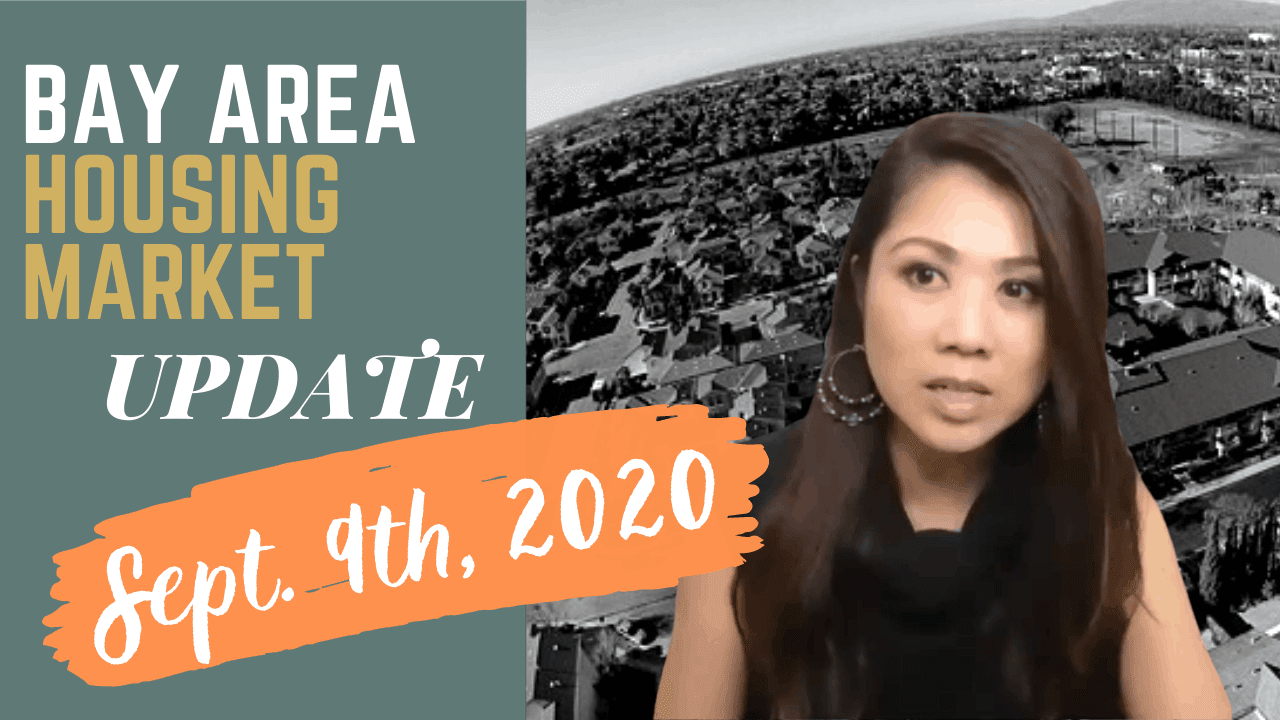

Welcome to our September 9th market update from the 12th Bay Area Housing Townhall Webinar! Let’s take a look at some housing market statistics and see what has happened since the last episode. You can also watch the video recording here.
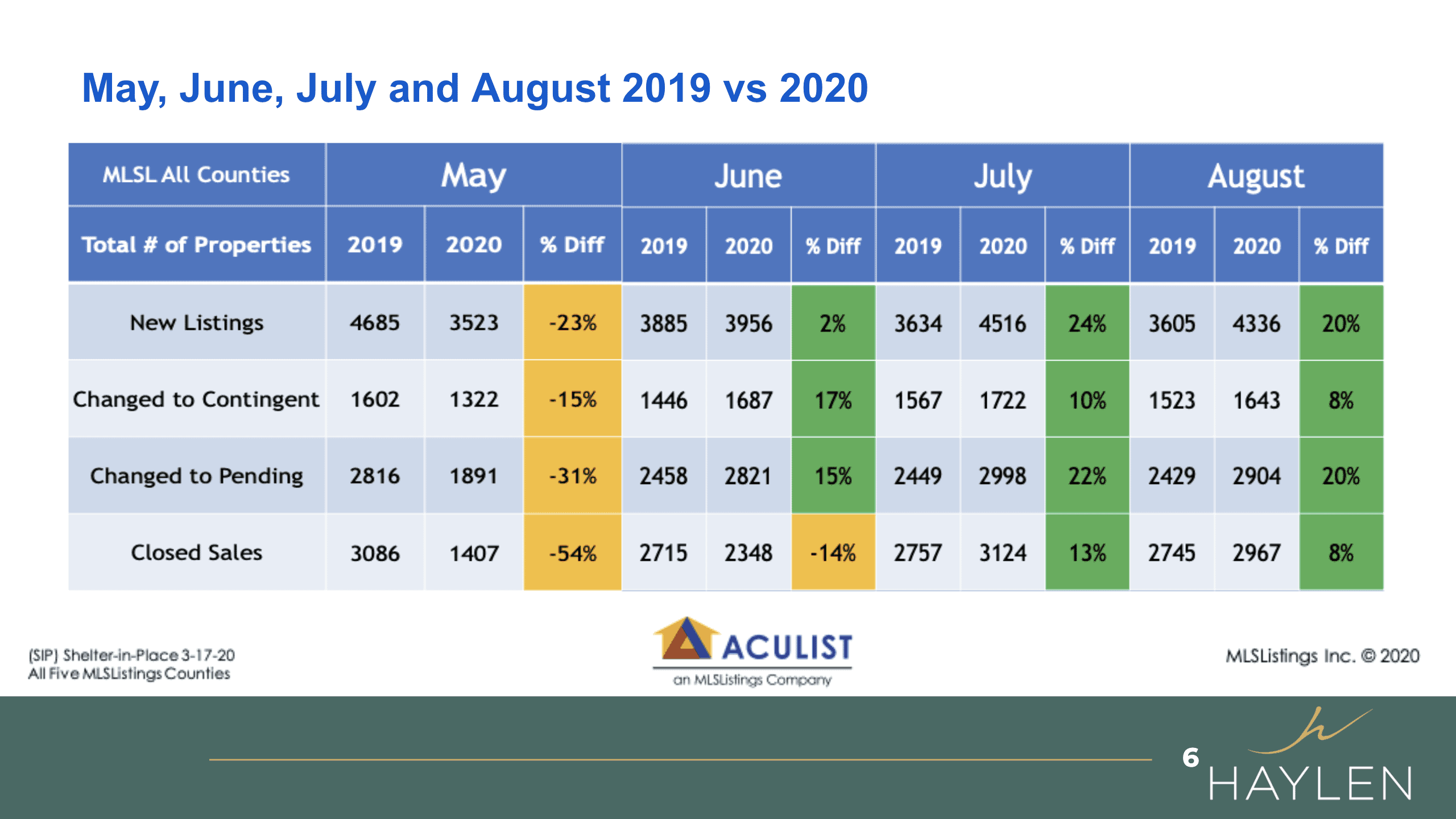
In this first graph we have data from May, June, July, and August. As you can see, since May things have been picking up. August, again, usually is one of the slower months because it’s summer, but the number of new listings has gone up quite a bit, change to pending also has gone up quite a bit. These are aggregate numbers from the five counties in the Bay Area, so the real estate market definitely has been going really strong.
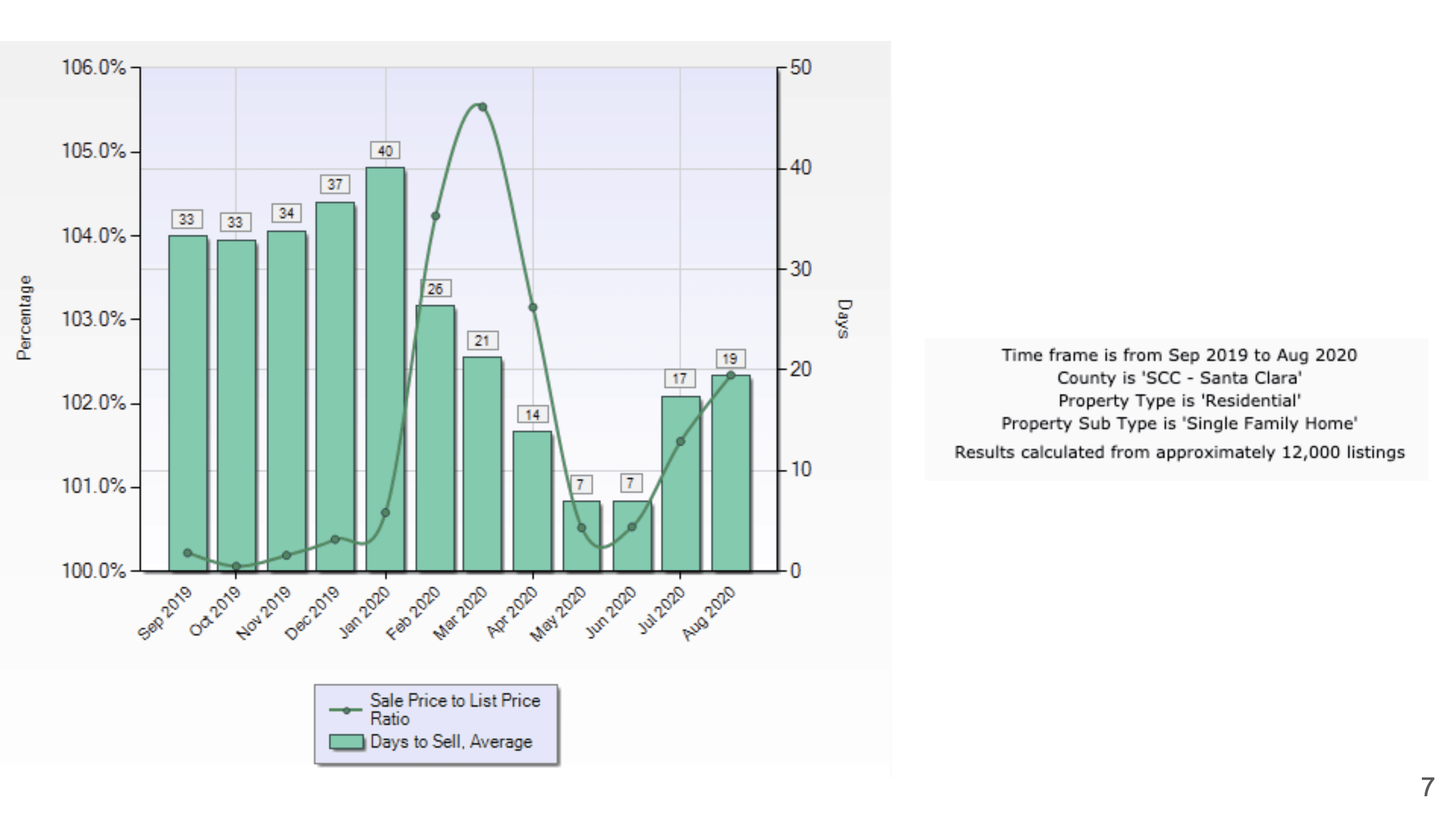
Above is another chart that I want to share with you. This is Santa Clara County from last year September until this year August 2020. If you look at the sales price to list price ratio, which means how much people are offering above the list price, you will see that it actually has gone up quite a bit since May, and if you really pay attention, at the beginning of the year, February and March has gone up a lot, it was about over five percent over asking price. However, if you compare it to last year, last year was very slow. A lot of people have been waiting until this year in 2020 to make their purchases, but because of Coronavirus, obviously, it had dropped, but it picked back up really quickly as soon as we’re allowed to do showing.
If you look at the number of days to sell, and the properties that have been staying on the market, it’s just slightly longer. It’s 19 days now on average but again compared to last year, which was over a month. The market was definitely way slower last year compared to this year.
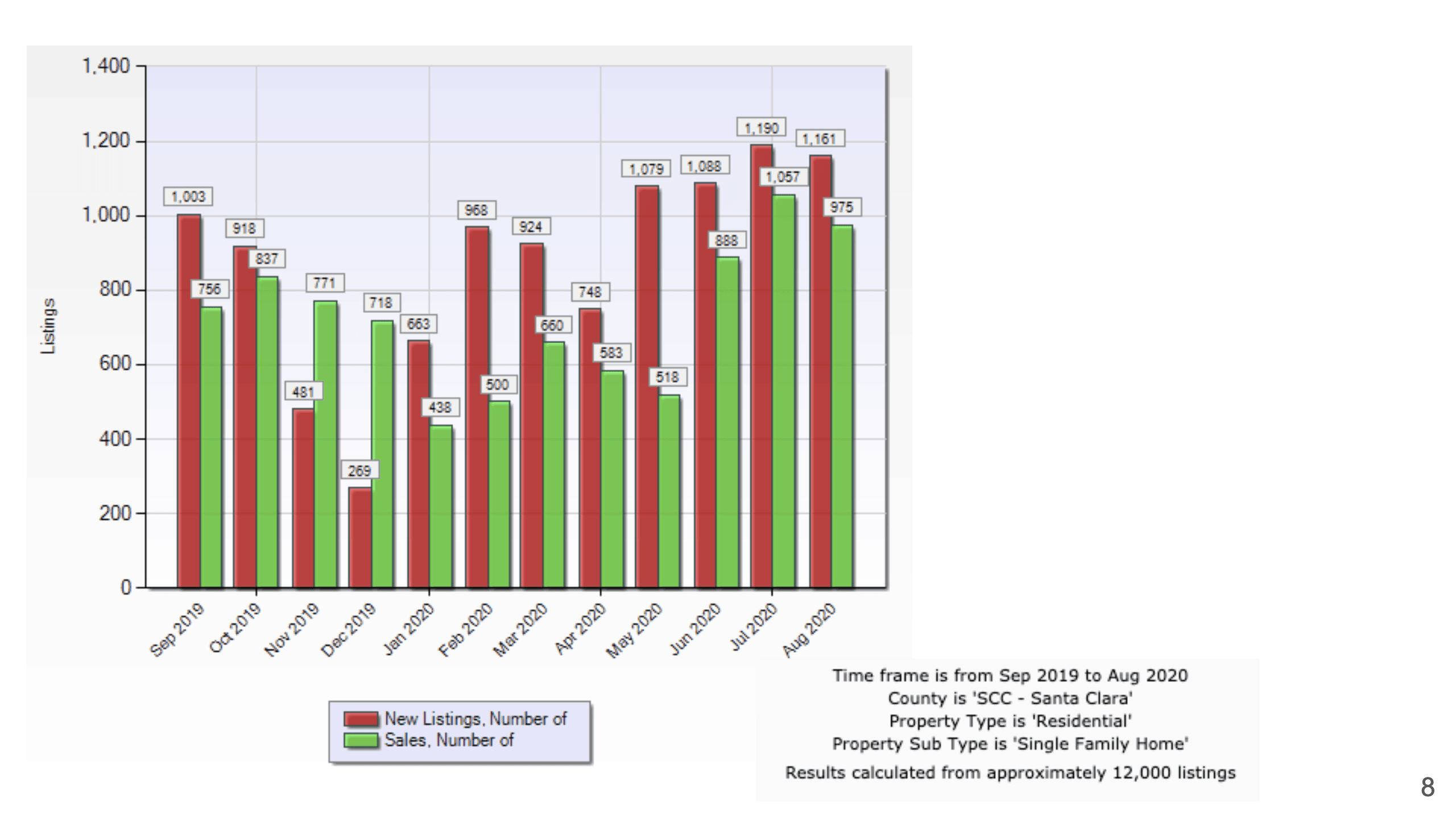
Here is another chart to look at the number of new listings versus how many listings have been sold, and if you compare this year August to last year September, we actually have a little bit more new listings this year, and we have more sales as well. Even though we have more listings, actually the price has gone up still, and we have more sales going on. You could tell that the number of sales was actually pretty low last year, and we definitely noticed it on the ground. We do open houses, a lot of buyers would come in, but at the same time, the number of offers compared to how many people were looking was quite drastic. This year we definitely noticed that there are a lot more people coming out to truly purchase properties, and one of the main reasons is, of course, the interest rates.
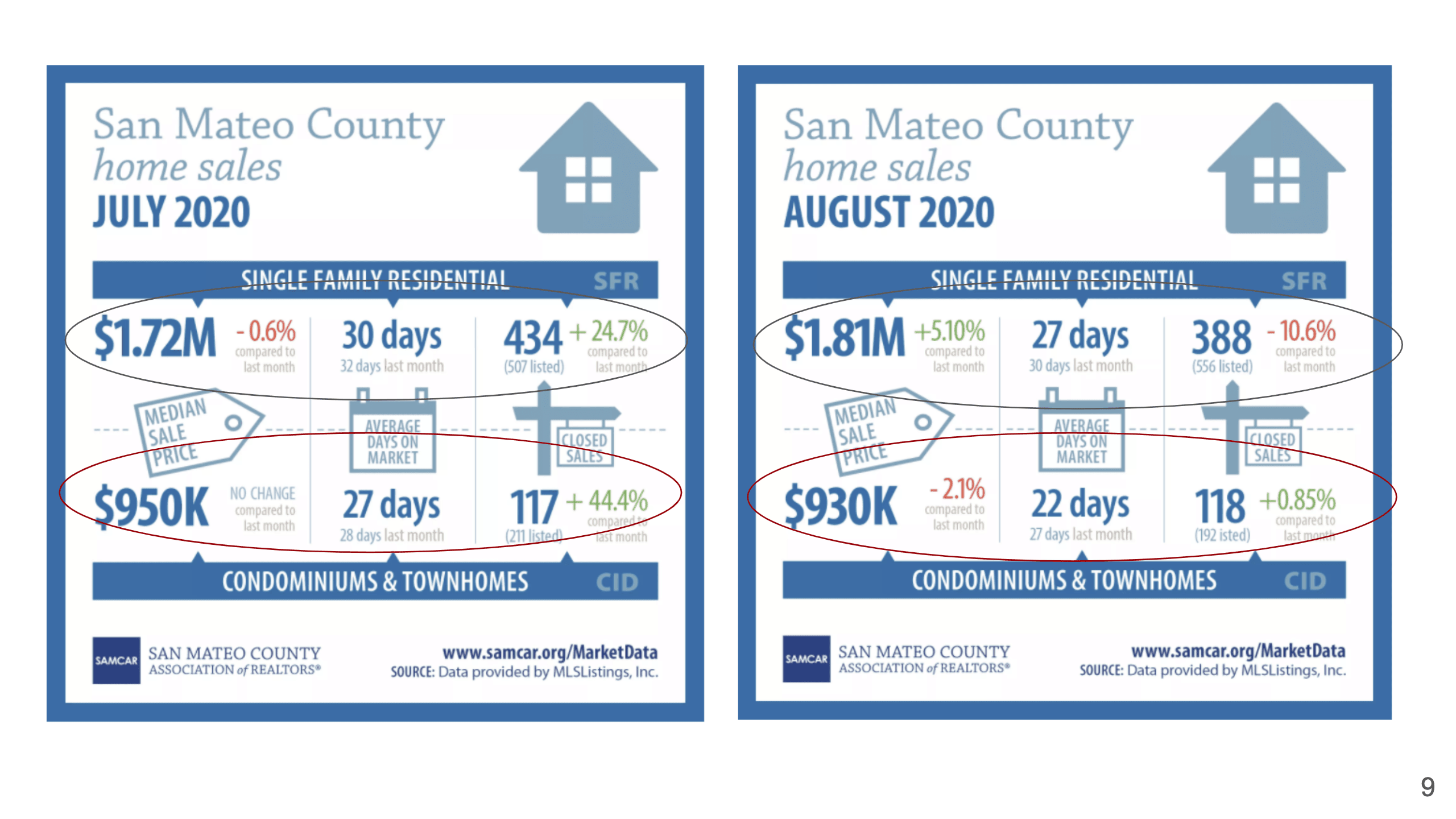
Now, let’s look at San Mateo County here comparing this year July and August. The price for single-family has gone up to from 1.72 to 1.81 million dollars, and the number of days though has come down. However, the number of sold listings actually has gone down as well a little bit. If you look at the condos, the pricing has gone down slightly – 2.1%, average days on the market again have gone down. People are purchasing a lot faster, and we have slightly higher – just one property more – in terms of close sales for this for last month in August.
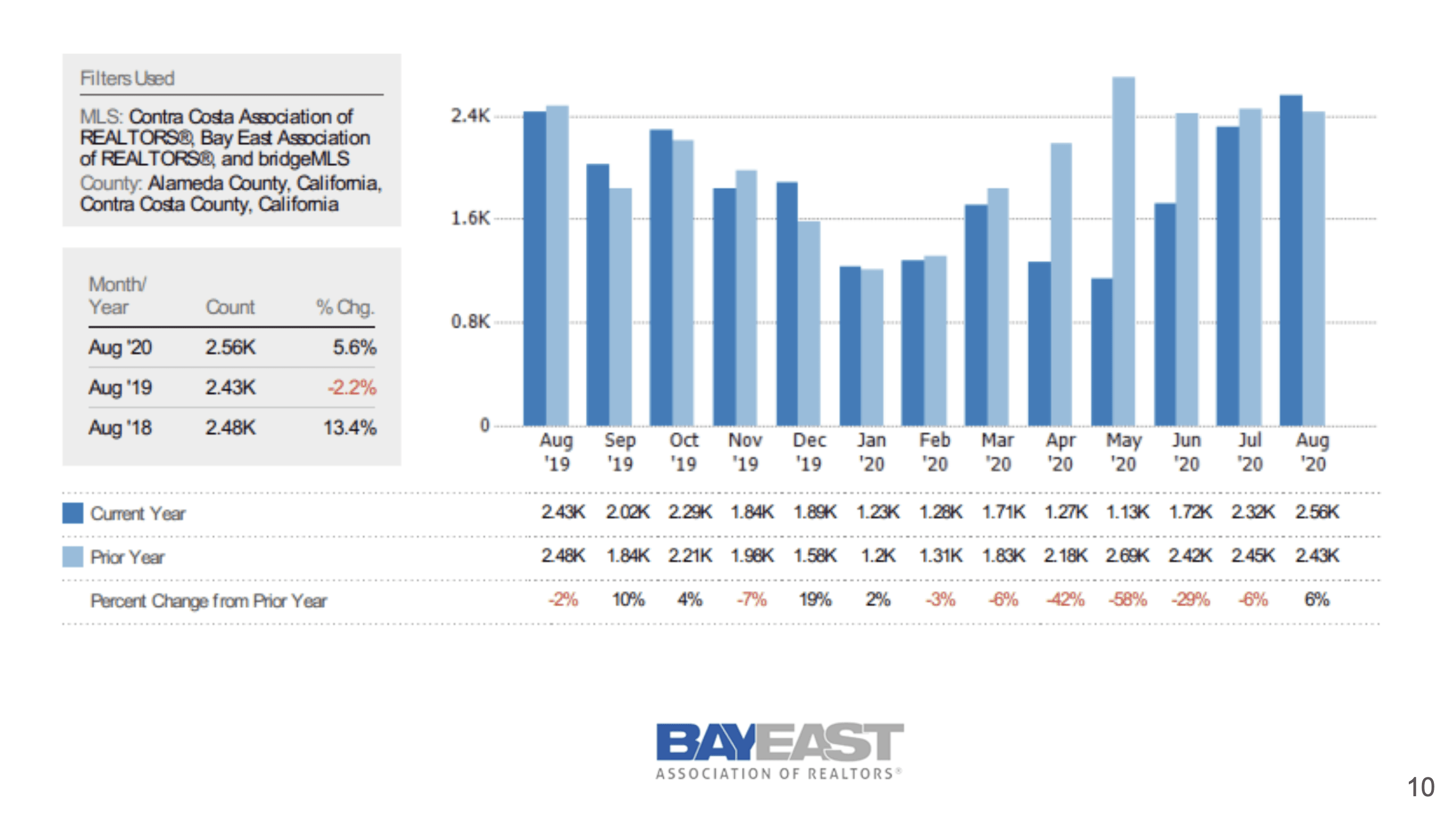
This one is on the East Bay, if you look at the numbers in terms of how many units have been sold in August, you’ll see that for the current year we have around 2,500 units versus around 2,400 units from last year, it had gone up 6%. But for the last few months, actually, the number of units sold has gone down, so people are quite actively looking in the East Bay Area.
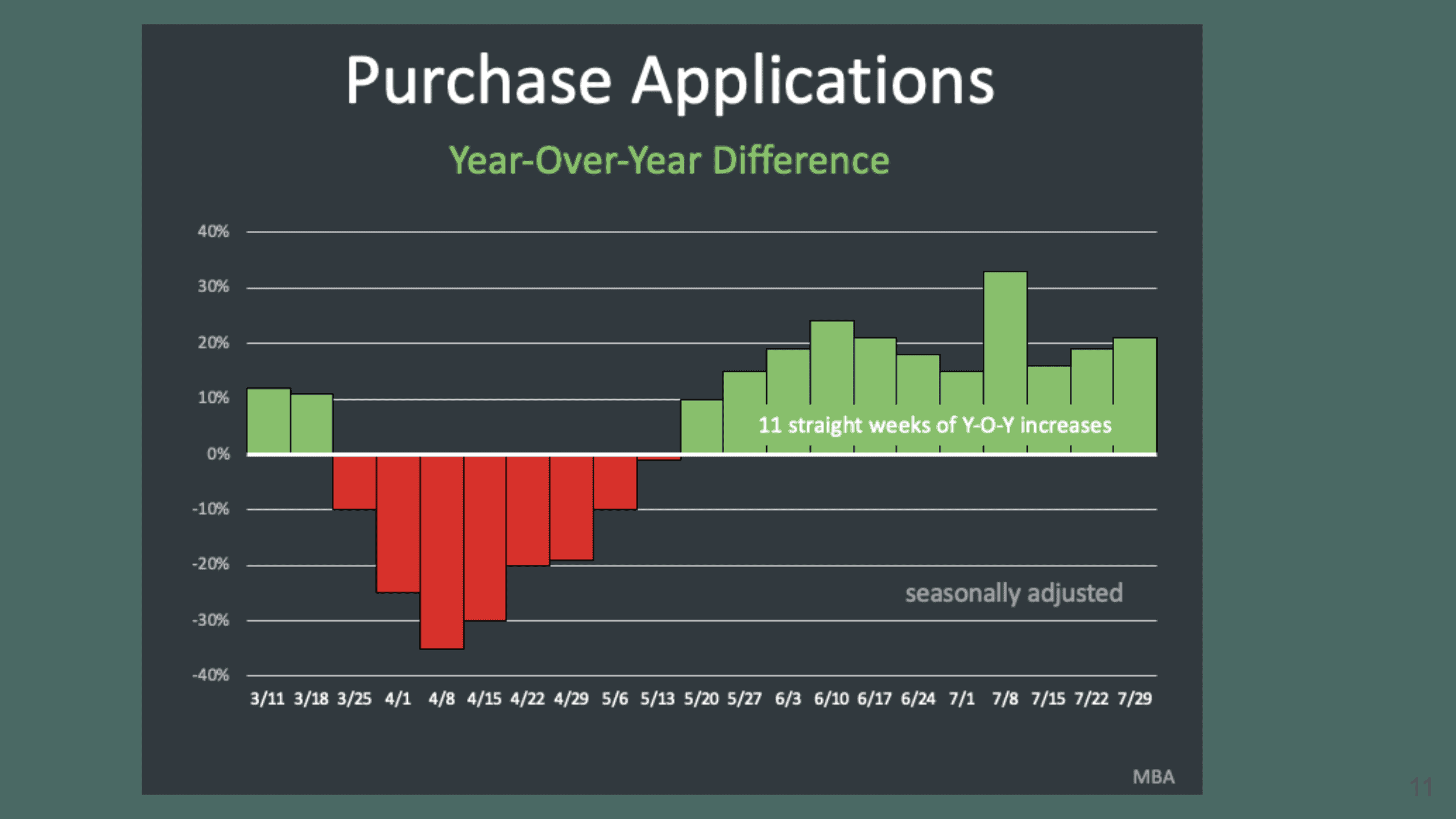
Now in terms of purchase applications, this is through the mortgage. We want to see how many people are doing purchase applications, then you could tell how active it is. You see that, of course, in March during the peak of the coronavirus pandemic, the purchase applications were quite low, but afterward it had picked really fast, so that really also explained why we have such high activities in terms of purchase.
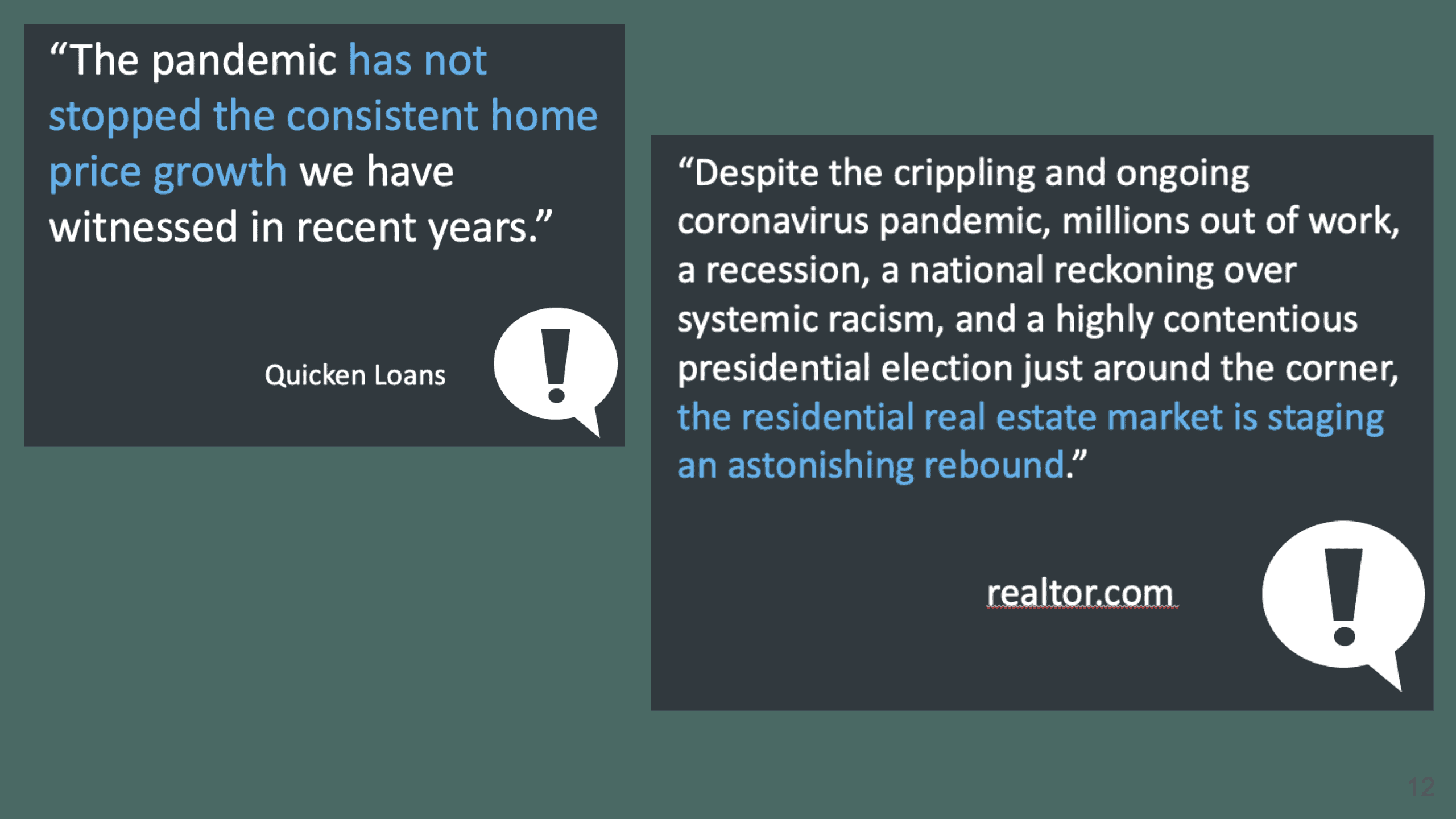
Even Quicken Loans have been saying that “the pandemic has not stopped the consistent home price growth we have witnessed in recent years”. Realtor.com said: “Despite the crippling and ongoing coronavirus pandemic, millions out of work, a recession, a national reckoning over systemic racism, and a highly contentious presidential election just around the corner, the residential real estate market is staging an astonishing rebound”.
I know there is a lot of fear from some people wondering what is going on. It seems like there is so much going on, but at the same time, our residential real estate market is really showing a lot of activities and there are a few reasons. Because of the coronavirus pandemic, people have changed the way they live. They want to move out of the area, or they want a bigger space. A lot of things have changed the way people live, and, of course, on top of that the interest rate has been so low, these are some reasons that there are a lot of activities in the real estate market.
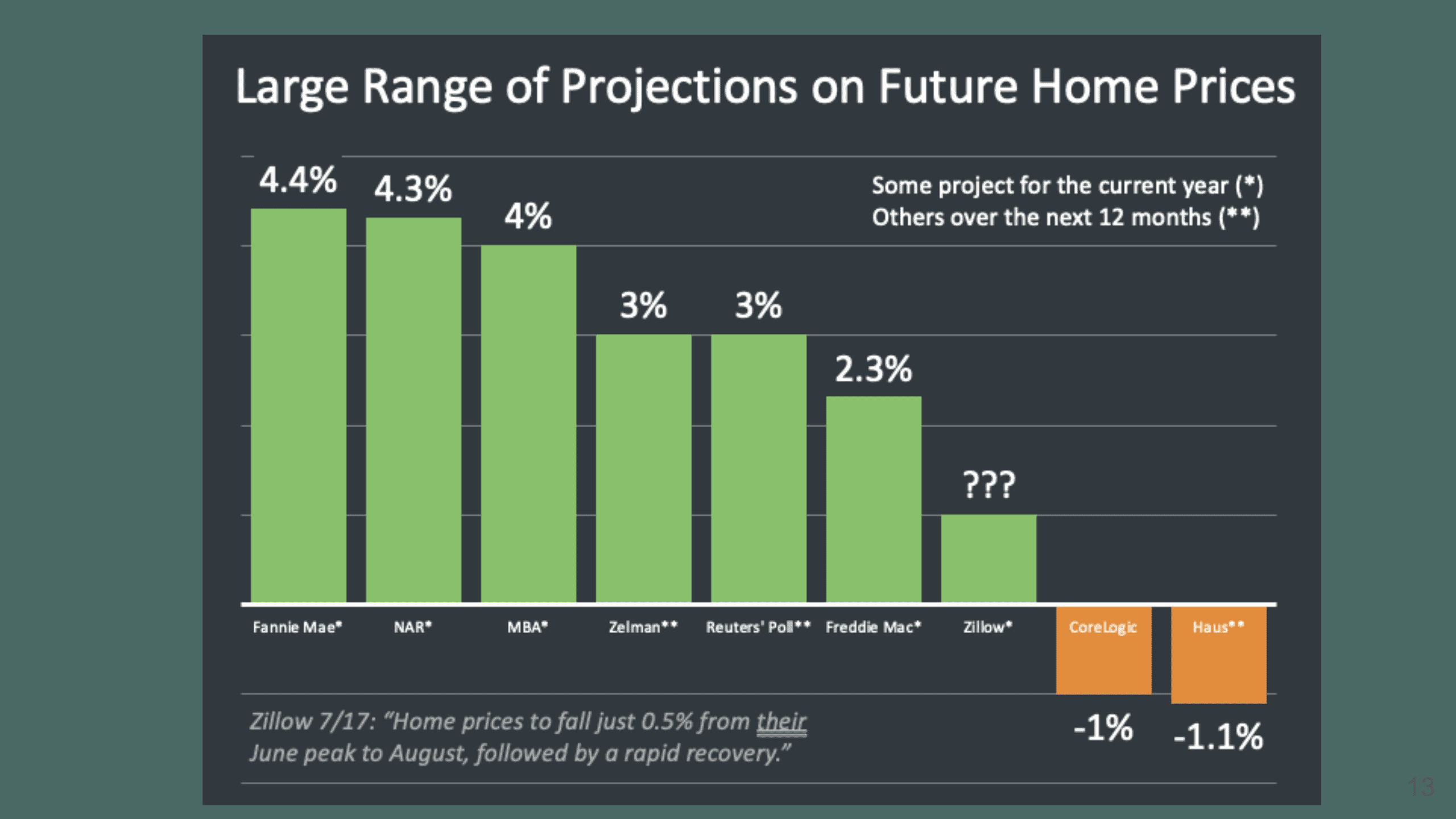
So what are they projecting on the future home prices? We have shown this chart last month as well, and the projection is still pretty strong – all the way from 4.4% down to negative 1.1%. Relatively speaking, most of the organizations have been predicting a higher number, while two organizations – Core Logic and Haus – are predicting a very small drop on the price.
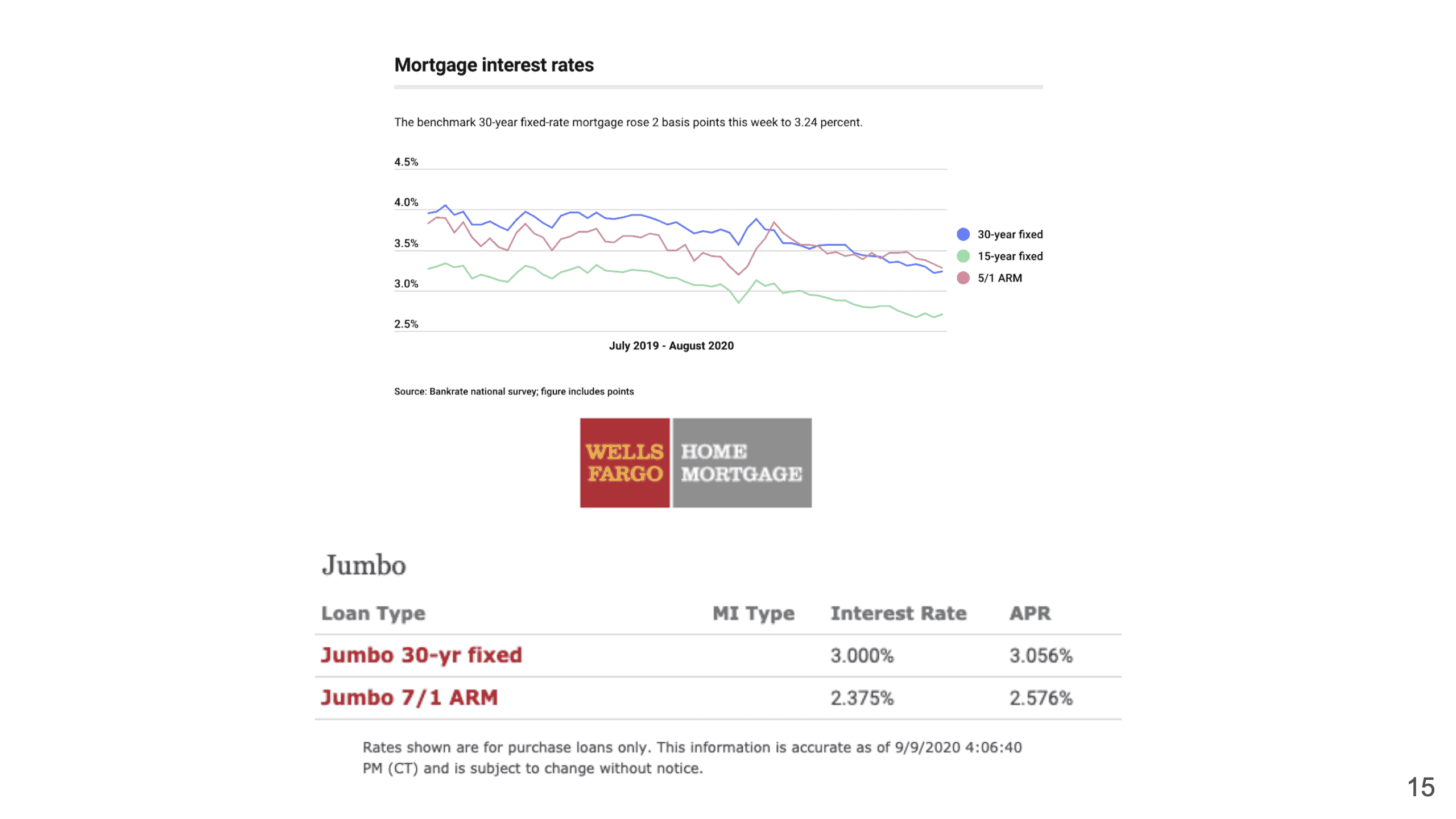
What about the mortgage market? We mentioned just now that the interest rate has been low, that’s why it has been pumping up these residential real estate activities. If you look at the jumbo 30 years fixed, this is today (Sept. 9th)’s rate. Again, reminding everybody that this does not apply to every single person. Last month I showed that it was 3.125%, I think the month before was 3.25%, so it has continued to come down on the jumbo rate. I want to remind everybody that there are programs out there being advertised right now saying that you can get 30 years for 1.99%. Be sure to ask about what is the point, how many points you will need to pay in order to get that 1.99% for 30 years fixed. It’s really important. If it makes sense then that’s great, but you have to make sure that it does make sense for you to take that 1.99%, and then pay each point equals to one percent of the loan amount. Let’s say if you have a $100,000 loan, and if it costs 1%, that’s a $1,000 fee, so be sure to double-check on that.
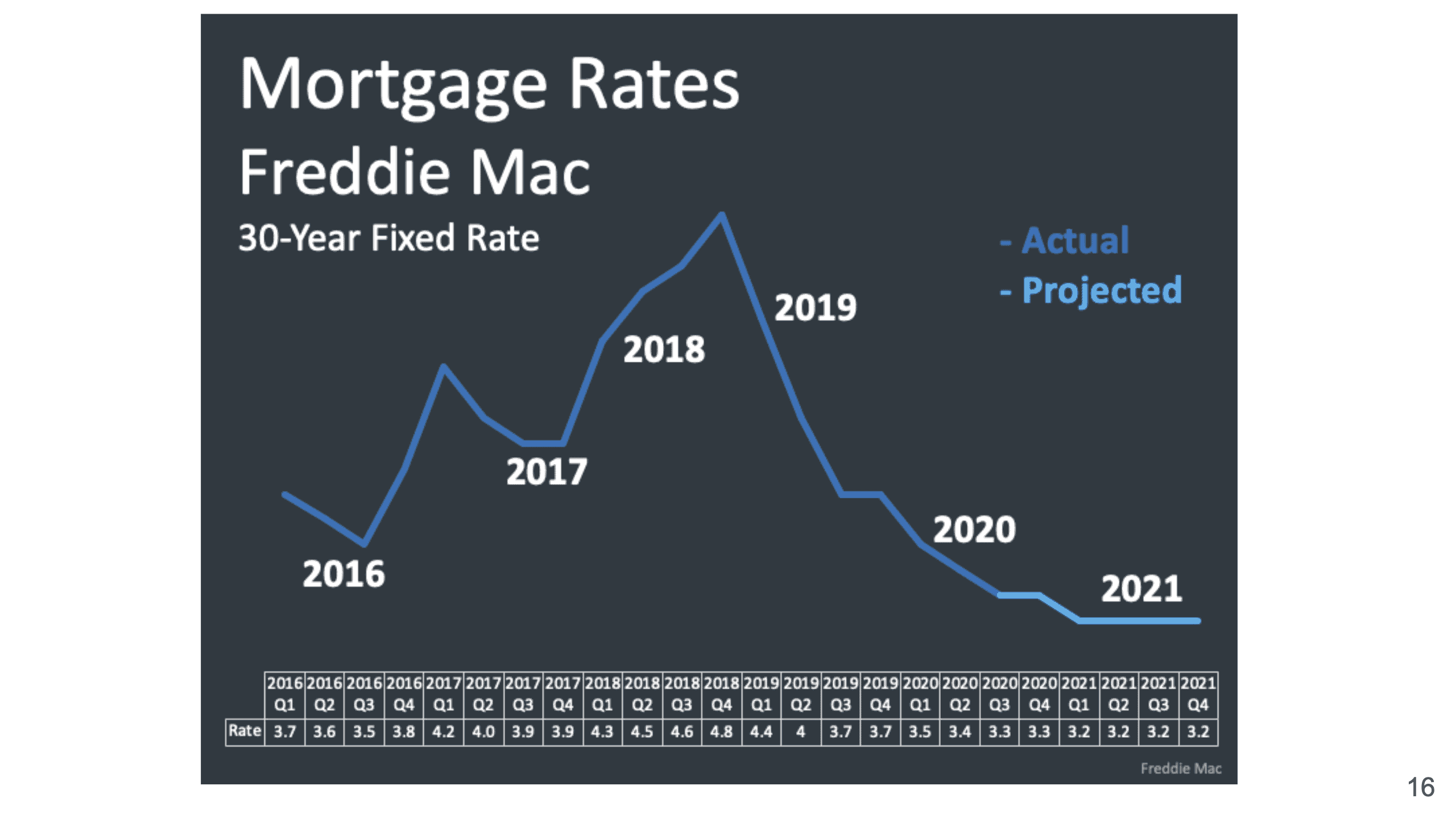
Now here are the mortgage rate projections, again from Freddie Mac. They are projecting the rate will continue to come down, and about 2021 Q1, it is going to stay pretty flat. We looked at another chart last month as well, they are pretty much projecting the same, so we are expecting the rate to stay pretty low for 2021.
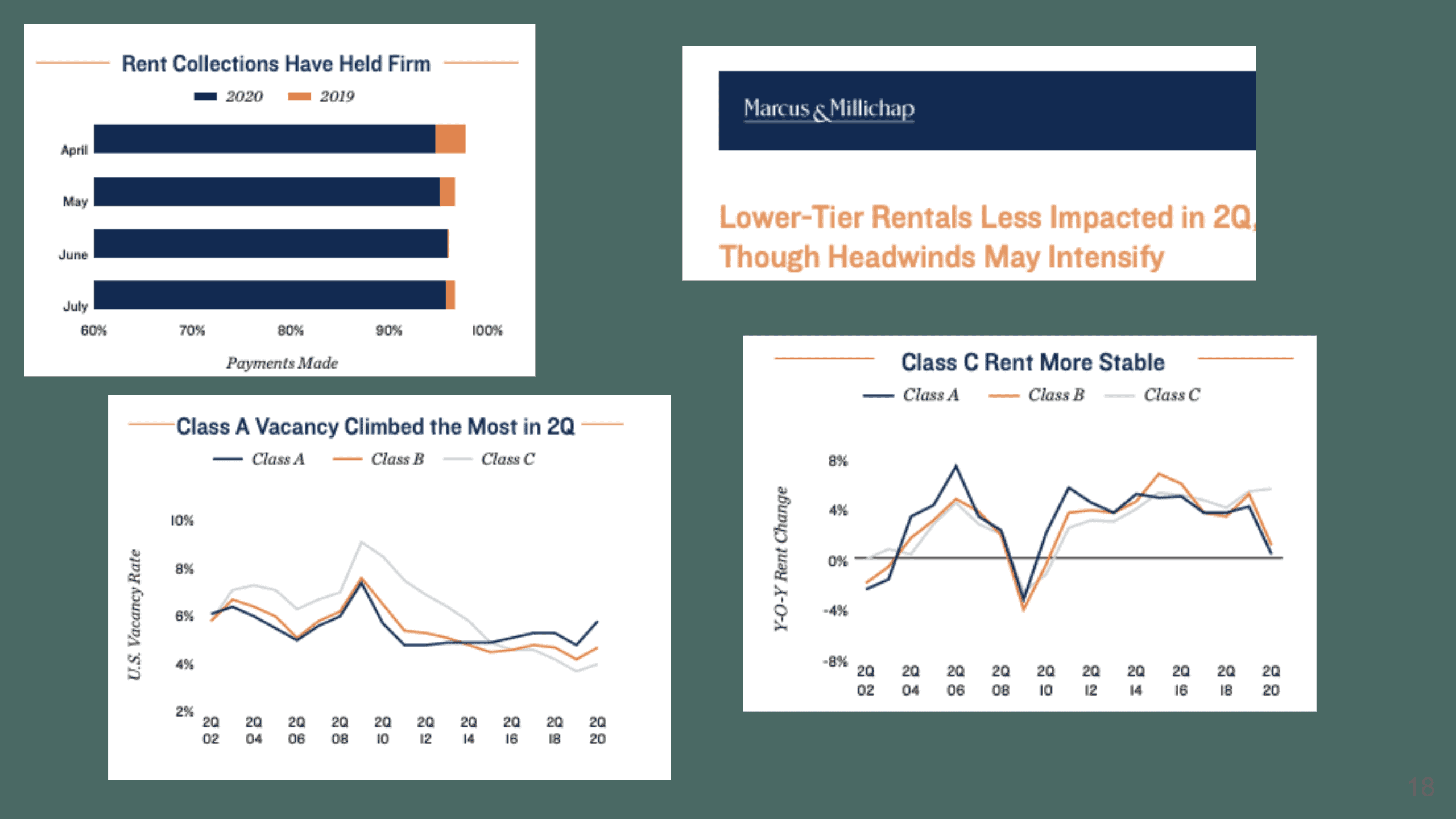
Now, what about multi-family? Today we are talking a lot about the landlord and tenants during this webinar, so multi-family definitely is something that we need to take a look at.
A lot of people are really wondering about the rent collections. This is not the most up-to-date, it is up to July. Until July there are still really strong rent collections. I do see that in August, we started to hear a little bit more about late payments from tenants, and more of the not able to collect all the rents, but the rent collectors have been held pretty strong. Then the class A vacancy definitely has started to climb, but in comparison to the lower tier rentals, they’re actually less impacted in 2Q. If you see class C rent here, it is actually a bit more stable compared to the rent of class A and class B properties.
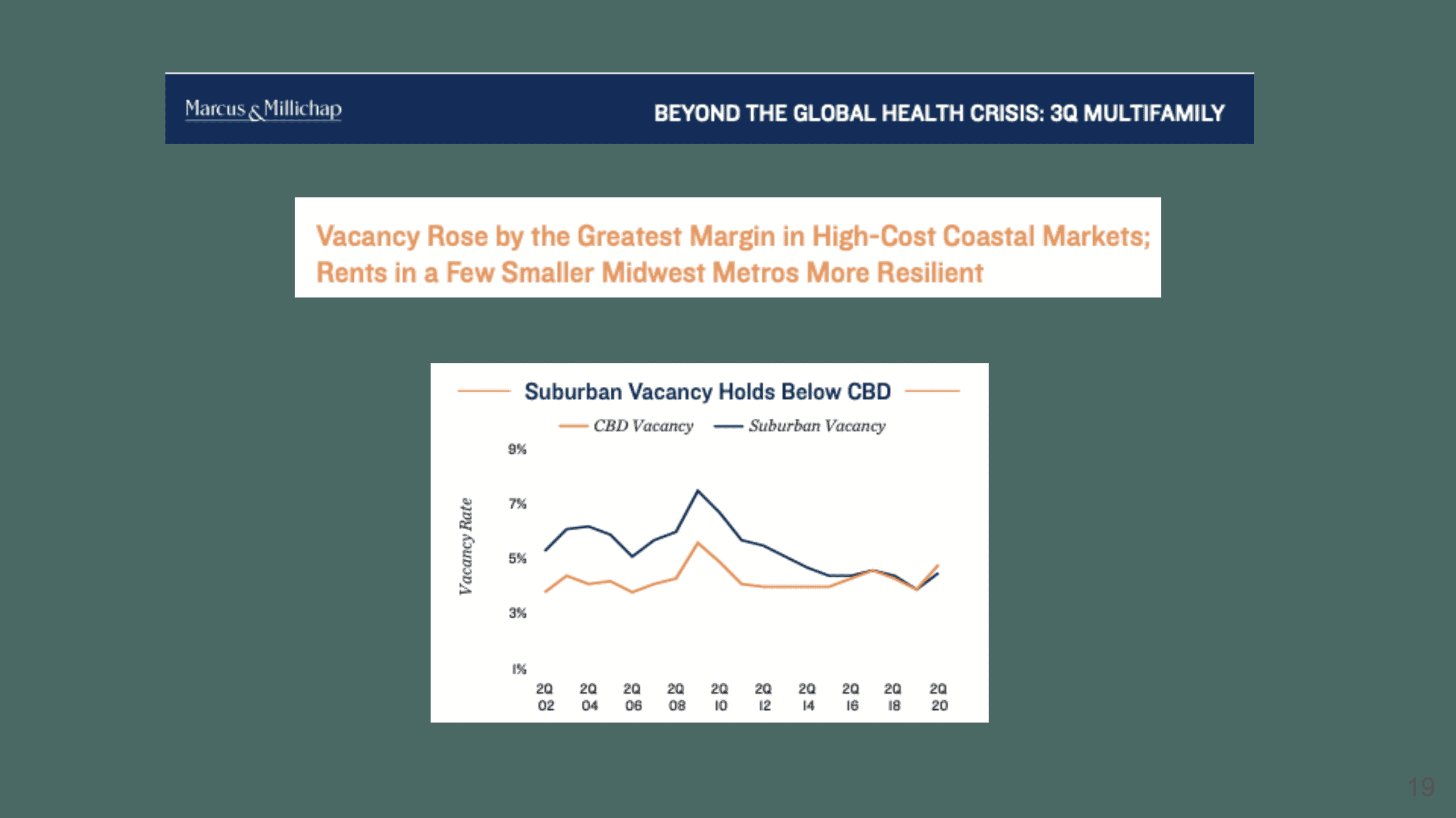
Also, vacancy actually rose a little bit more in the high-cost coastal markets, and the rents in a few smaller midwest metros are more resilient. It’s pretty accurate. We definitely have seen that the rents have come down quite a bit at larger markets, while the rents in the suburban markets have held pretty strong. As you can see the chart, the same thing here, that the suburban vacancy has come up a little bit, but it’s not as bad.
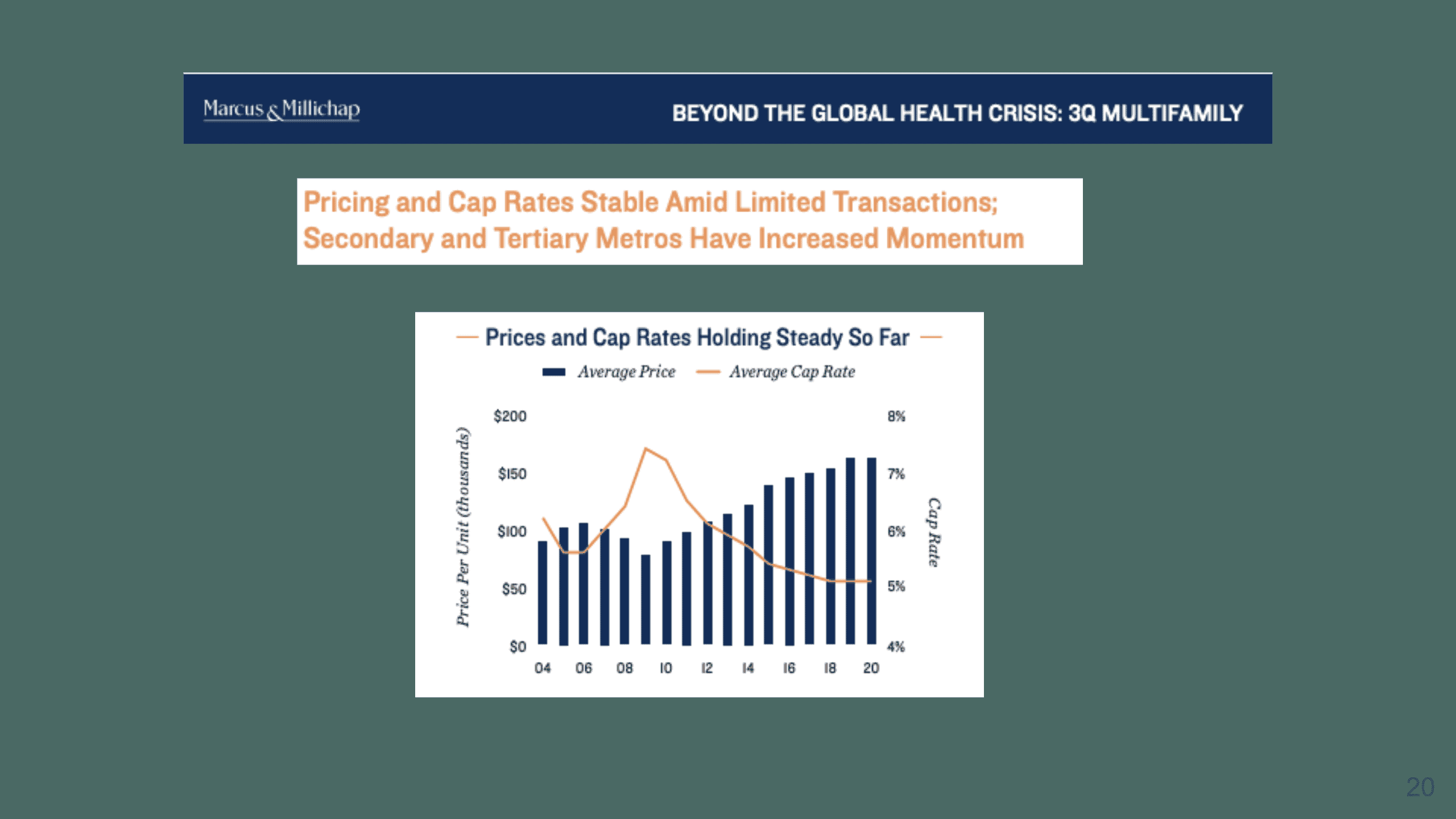
In terms of the pricing and cap rates, I think what surprised a lot of people is that the cap rates have held up pretty strong during this time. The average cap rate is still right around 5%, and one of the main reasons, of course, is that the interest rate is still pretty low. Then the secondary and tertiary metros have increased momentum, and the pricing actually has been staying pretty strong. We still see that some sellers are holding out on their pricing, and buyers want to have a good deal at this time. As a result, we still have this gap that the seller and buyers may not be able to meet unless the seller really is in a desperate situation, otherwise, we still don’t really see the seller willing to come down on their pricing that much.
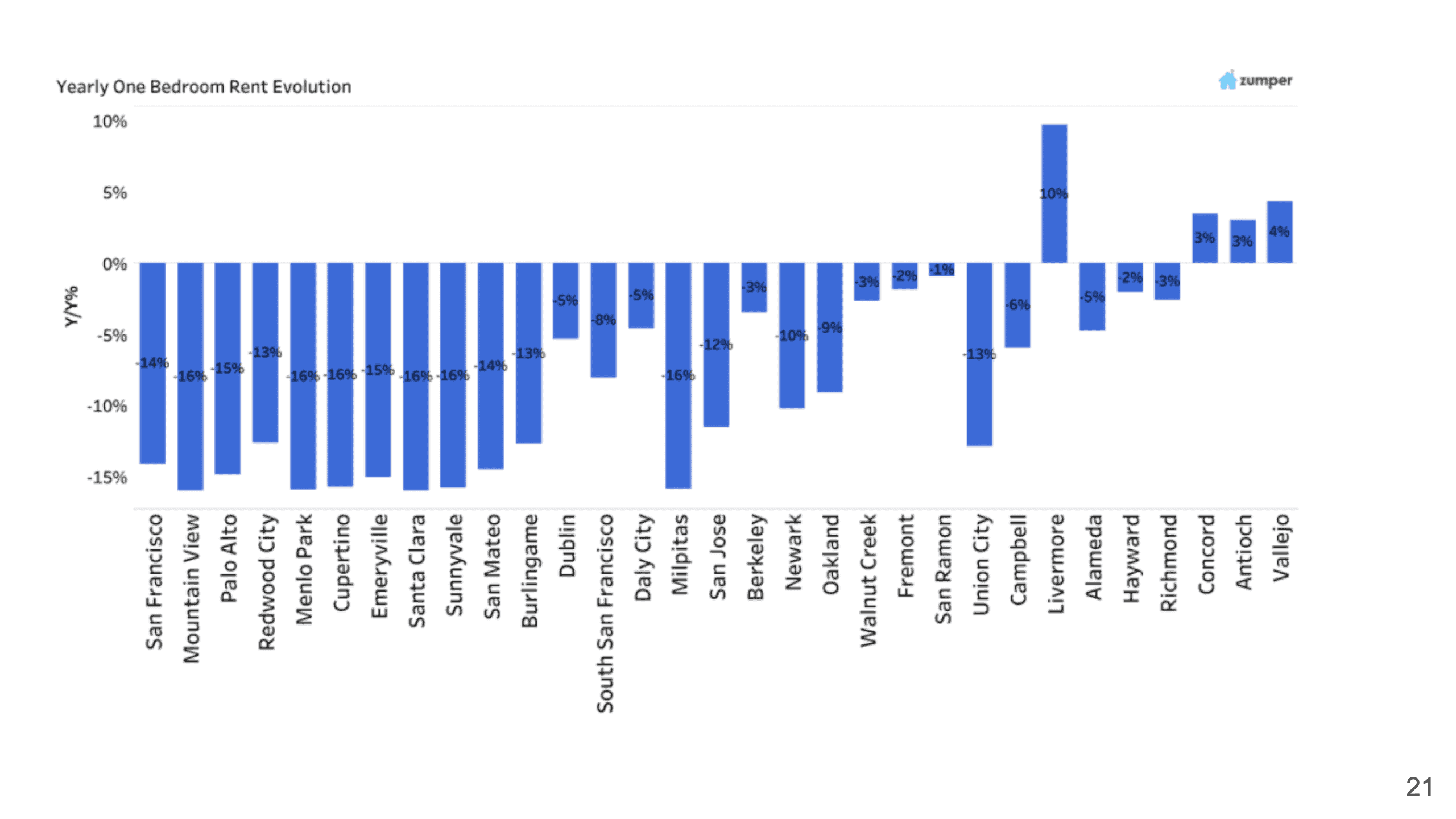
Here is the chart that we were just talking about rent prices. Some of the metro cities, one-bedroom rents have gone down. San Francisco, you know, we’ve been hearing a lot, San Francisco came down 14%, Mountain View came out 16%. But let’s look at some of the suburban markets. Vallejo has gone up 4%, Antioch 3%, Concord 3%, and Livermore 10%. We do see that some of the outskirt areas that had been having a relatively lower rent have actually gone up in rents.
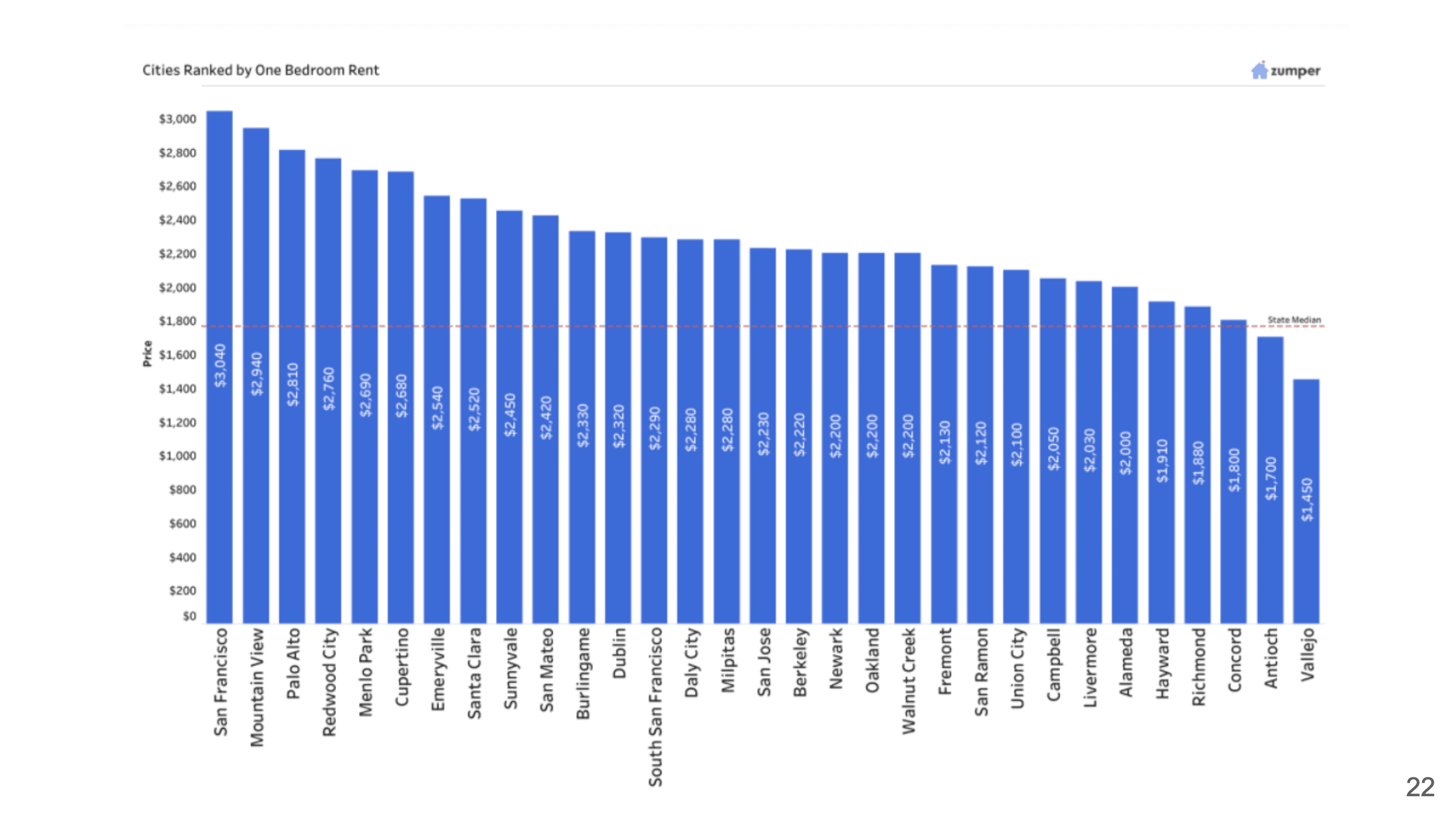
The graph above shows the ranking in terms of how expensive one-bedroom rent is. Now you can see San Francisco, of course, they are number one there, as a matter of fact, they’re number one in the country, not just in California or the Bay Area. And Vallejo right now is actually the lowest rent in the Bay Area.
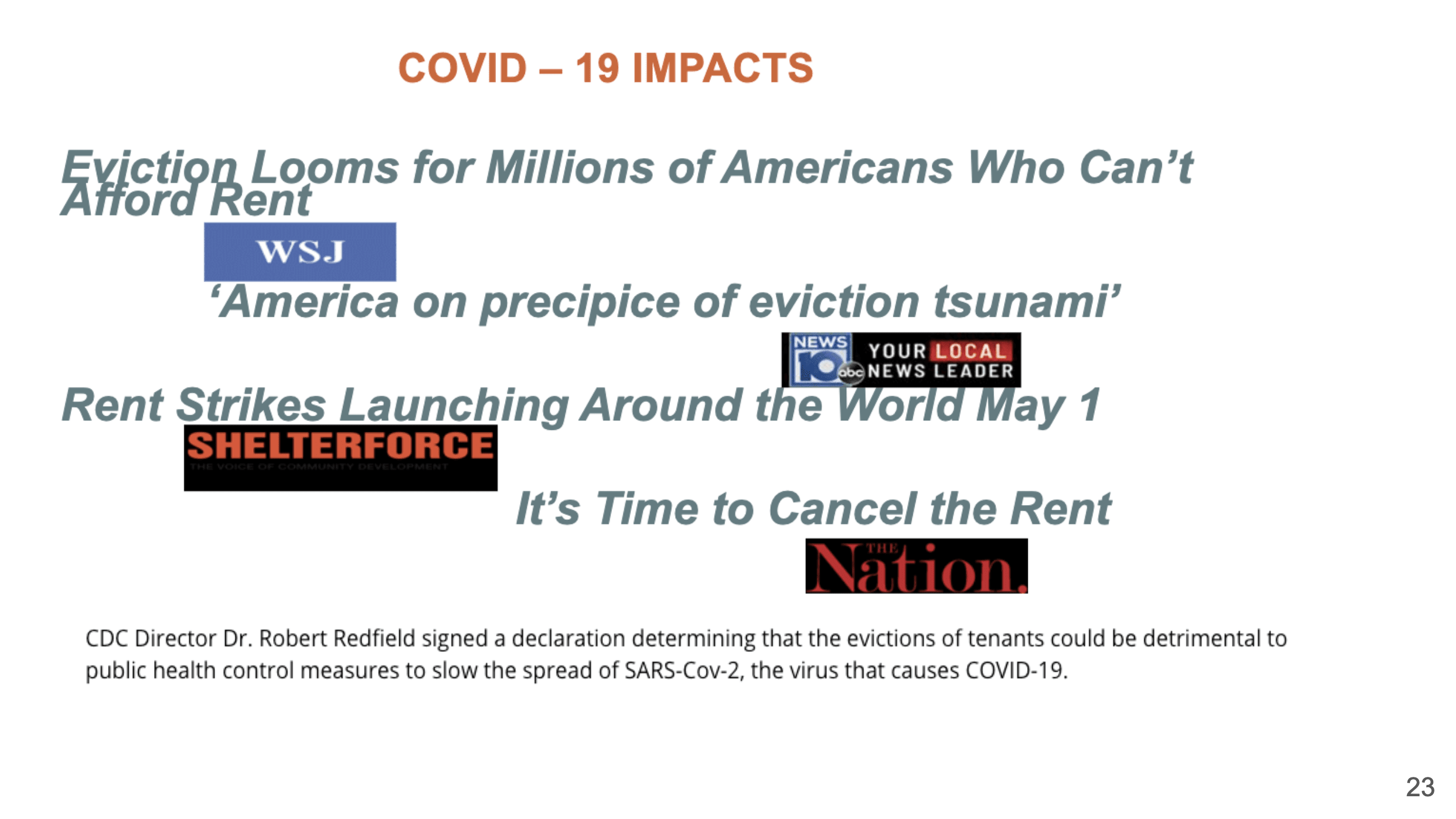
We have been hearing so much about evictions, evictions, evictions. It seems like the one topic that just can’t go away. We are all wondering what is going on. Tenants are really worried because the news keeps talking about they are going to be evicted if they cannot pay rent. Landlords are really worried that if the tenants cannot pay rent, they cannot pay the mortgage. And recently, the CDC director actually signed a declaration saying that “the evictions of tenants could be detrimental to public health control measures to slow the spread of SARS-Cov-2, the virus that causes COVID-19”, so it seems like the CDC had also come out to say that – hey we need to halt the eviction to prevent the spread of the virus.
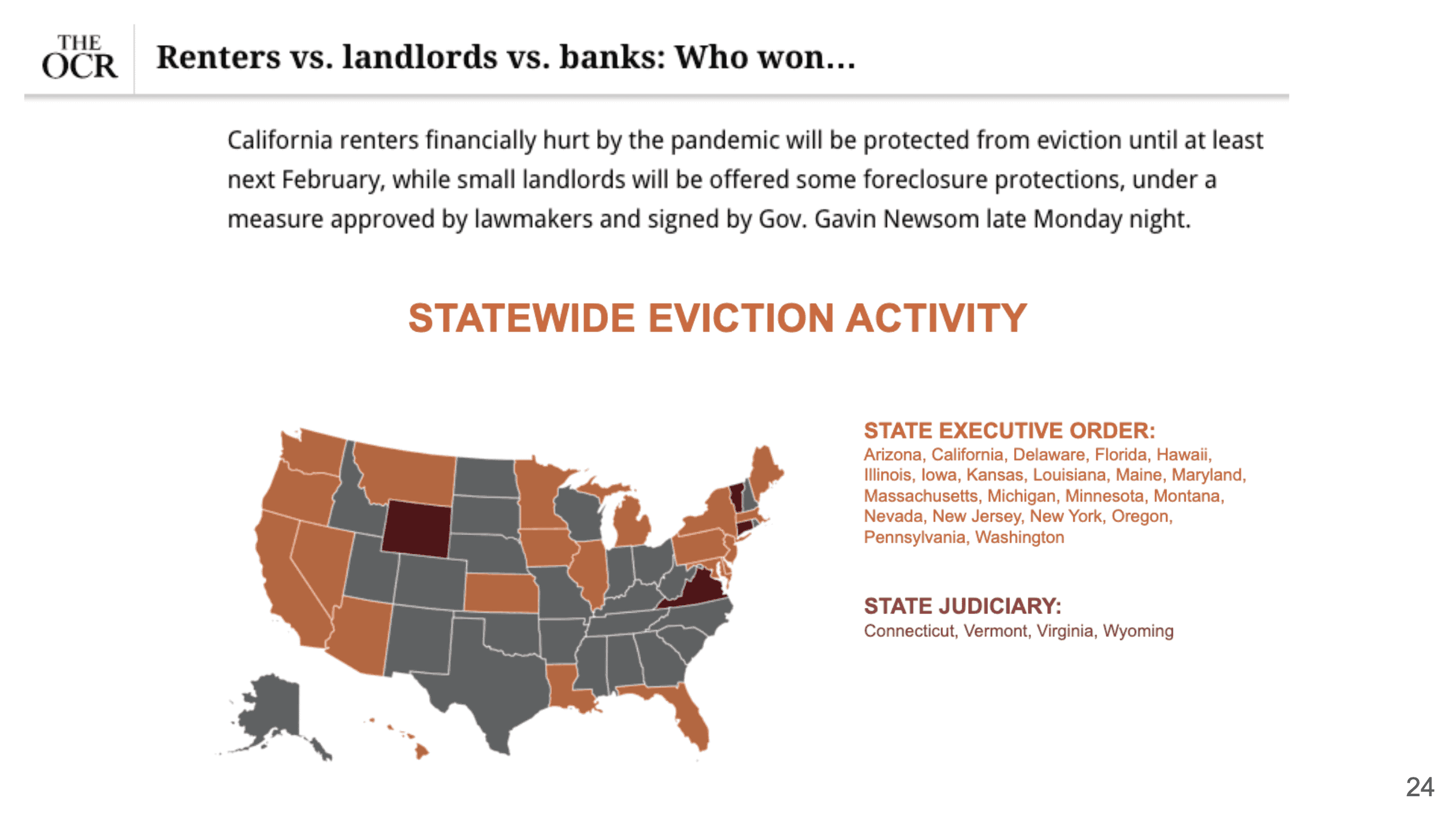
Now, again we have all these news headlines – “California renters financially hurt by the pandemic will be protected from eviction until at least next February, while small landlords will be offered some foreclosure protections, under a measure approved by lawmakers and signed by Gov. Gavin Newsom late Monday night”. Here, you know, statewide eviction is not just California, it’s actually the entire country. There are some states that don’t have the state executive order, but we do have now the federal eviction order as well. So this is one of the reasons why we have invited Daniel Bornstein to come and speak to us today regarding this situation. How do you handle these tenants not paying situations, or how do you handle the eviction if the tenant really is causing some issues?
If you are interested in hearing more about Evictions, Tenants Buyout, and Non-Payments amid COVID-19, check out the full recording of the 12th Bay Area Housing Townhall Webinar here. Renowned real estate Daniel Bornstein will guide you through the landlord-tenant laws that are changing with the impact of the COVID-19 pandemic.
Feel free to use the discussion section below to let us know your thoughts and opinions, if you have any other questions or topics you would like to discuss in detail, don’t hesitate to get in touch with us!
Stay up to date on the latest real estate trends.






You’ve got questions and we can’t wait to answer them.